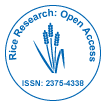Notre groupe organise plus de 3 000 séries de conférences Événements chaque année aux États-Unis, en Europe et en Europe. Asie avec le soutien de 1 000 autres Sociétés scientifiques et publie plus de 700 Open Access Revues qui contiennent plus de 50 000 personnalités éminentes, des scientifiques réputés en tant que membres du comité de rédaction.
Les revues en libre accès gagnent plus de lecteurs et de citations
700 revues et 15 000 000 de lecteurs Chaque revue attire plus de 25 000 lecteurs
Indexé dans
- Index Copernic
- Google Scholar
- Ouvrir la porte J
- Clés académiques
- Bibliothèque de revues électroniques
- Recherche de référence
- Répertoire d’indexation des revues de recherche (DRJI)
- Université Hamdard
- EBSCO AZ
- OCLC-WorldCat
- Direction des chercheurs
- Catalogue en ligne SWB
- Bibliothèque virtuelle de biologie (vifabio)
- Publons
- Euro Pub
Liens utiles
Revues en libre accès
Partager cette page
Abstrait
Determining the Level of Genotypic Variability of different Upland Rice Genotypes using Cluster Analysis
Gedifew Gebrie Muchie and Abebe D
Determining the extent and degree of germ plasm diversity and genetic relationships among breeding materials is an important aid in crop improvement research strategies with an understanding that genetic variability is the base for crop improvement providing an opportunity for plant breeders to develop new and improved cultivars with desirable traits and it is a key to reliable and sustainable production of crops through breeding. It has been also confirmed that measuring the available genetic diversity of crops is important for effective evaluation and utilization of germ plasms to explore their variability so as to identify necessary agronomic traits. For eradicating the problem of rice production, the national rice breeding and genetics research program of the country is introducing and evaluating different rice germ plasms for their environmental adaptability and agronomic performance with increasing the crops’ genetic diversity. Likely, 100 upland rice genotypes were introduced and evaluated with 3 nationally released upland rice varieties as standard checks using an augmented-RCBD experimental design so as to assess and determine the extent and pattern of their genetic variability using cluster analysis bringing them into similar groups based on their important agronomic traits. Each genotype was planted on a plot area of 2.5 m2 involving 4 rows per plot with 0.25m spacing between each row. The seeds were drilled in rows with a seed rate of 60 kgha-1. Nitrogen-phosphorus-sulphur (NPS) and Urea fertilizers were applied in the amount of 124 kg ha-1 and 100 kgha-1 respectively. The quantitative traits such as days to 50% heading, days to 85% maturity, plant height, panicle length, number of filled grains per a panicle and number of unfilled grains per a panicle, grain yield and 1000 seed weight were measured from 97 genotypes since 6 of the genotypes were not emerged and data were not yet collected from them. The collected quantitative traits were subjected to clustering analysis using XLSTAT 5.03 statistical software so as to determine the extent and pattern of the genetic variability of 97 upland rice genotypes. During clustering analysis, the genotypes were grouped into five clusters with different Euclidian distances confirming the presence of genetic variability among the evaluated upland rice genotypes. The genotype with the highest grain (6298 kgha-1) yield was obtained and included under cluster-III.
Revues par sujet
- Agriculture et Aquaculture
- Biochimie
- Chimie
- Food & Nutrition
- Génétique et biologie moléculaire
- Géologie et sciences de la Terre
- Immunologie et microbiologie
- Ingénierie
- La science des matériaux
- Le physique
- Science générale
- Sciences cliniques
- Sciences environnementales
- Sciences médicales
- Sciences pharmaceutiques
- Sciences sociales et politiques
- Sciences vétérinaires
- Soins infirmiers et soins de santé
Revues cliniques et médicales
- Allaitement
- Anesthésiologie
- Biologie moléculaire
- Cardiologie
- Chirurgie
- Dentisterie
- Dermatologie
- Diabète et endocrinologie
- Gastro-entérologie
- Immunologie
- La génétique
- Maladies infectieuses
- Médecine
- Microbiologie
- Neurologie
- Oncologie
- Ophtalmologie
- Pédiatrie
- Recherche clinique
- Soins de santé
- Toxicologie

 English
English  Spanish
Spanish  Chinese
Chinese  Russian
Russian  German
German  Japanese
Japanese  Portuguese
Portuguese  Hindi
Hindi